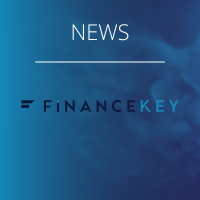This is envisioned as a key development for Ripple, aiming to bridge the gap between traditional finance and decentralised finance. This announcement was well received by both the crypto world and the traditional financial world given the firm rise in institutional interest in the stablecoin market.
In this blog we will describe Ripple’s stablecoin project and further investigate what the driving forces are behind this move as well as what will be the future role of the XRP Ledger ecosystem. But above all what it may bring for Ripple, and what it mean for Ripple’s competitive position in both the stablecoin market and the DeFi landscape.
But first, in short, what are stablecoins in general?
Stablecoins are digital tokens that offer a safe haven from price volatility. These are unique digital assets that offer the best of traditional and decentralised finance (DeFi). They derive their value from pegging their price to stable assets such as traditional fiat currencies (mostly the US dollar) or commodities like gold. As a result, they offer a significantly less volatile alternative compared to established cryptocurrencies like Bitcoin and Ethereum. This makes them particularly attractive to risk-averse financial players looking for a more stable vehicle.
They have gained widespread adoption due to their stability and utility in facilitating various financial transactions within the crypto ecosystem. Stablecoins are mainly used to facilitate trade, provide liquidity for currency hedging, and protect their portfolio against crypto market volatility. Another area in which stablecoins have shown immense promise is international remittances and inflation hedging.
Ripple’s stablecoin project
Early April Ripple announced its plan to launch a stablecoin for the XRP Ledger ecosystem, initially pegged to the US dollar, offering stability and predictability compared to the often volatile cryptocurrency market.
Backing of Ripple’s stablecoin
Ripple’s stability currency, which will be pegged to the U.S. dollar, is going to be backed 1-to-1 by a combination of highly reliable assets, ensuring its stability and reliability through transparency and quality backing.
The stablecoin will be fully collateralized by US dollar deposits, along with short term US government bonds (treasuries), and other cash equivalents, including high-grade commercial paper or money market instruments.
Compliance first model
Ripple is prioritizing the issuance of a “compliance-first” and trustworthy stablecoin that aligns with global regulatory standards. This will be key for Ripple, to keep hold of its primary clientele composed of institutions and governments.
Transparency – historically a key point of scrutiny for stablecoin issuers – will be a key focus for Ripple as it rolls out its new token. Periodic independent audits of these reserves by a reputable third party accounting firm are planned to ensure security, by promising monthly attestation reports on its stablecoin reserves made publicly available. These reports may include information on which banking partners the firm is using to custody assets, although the auditing firm has not yet been disclosed.
Launch on both the XRP Ledger and Ethereum
Ripple’s stablecoin will initially be available on Ripple’s institution-focused XRP Ledger (XRPL) along with Ethereum (ETH) blockchain, and it will be based on Ethereum’s ERC-20 token standard. This could significantly enhance its adoption and utility across various blockchain ecosystems.
Eventually, Ripple plans to expand to additional blockchains, decentralized finance (DeFi) protocols and various apps over time. Ripple’s future stablecoin’s multichain compatibility underscores the company’s commitment to interoperability, a crucial feature for seamless interaction between disparate blockchain networks.
Integrating the stablecoin with major cryptocurrency exchanges could increase its accessibility and liquidity. This would allow for easier trading and wider adoption by individual users. No decision has still been made on which exchanges it will initially trade on.
Target at the US market
The initial launch of the Ripple stablecoin is reportedly targeted at the US market. This token will be aimed primarily at enterprise customers and banking institutions, organizations for whom “those kinds of practical arguments aren’t really prescient because they have to justify their decisions to stockholders and to regulators and so on.”
But Ripple has not ruled out the possibility of introducing regional variations for other markets such as Europe and Asia. Notably, Ripple’s customers in emerging markets have expressed interest in facilitating stablecoin payouts.
When available
Ripple’s stablecoin is expected to be available later this year, subject to applicable regulatory approval. While Ripple has unveiled plans to introduce its stablecoin pegged to the US dollar. the exact launch date has not been disclosed yet.
Further updates and details on Ripple’s stablecoin will be disclosed in roughly a month during the XRPL Apex event in Amsterdam, which is scheduled for June 11-13.
Motivations behind Ripple’s move?
It is interesting to know what are the reasons behind this move. Most are from a strategic point of view. Ripple’s shift to stablecoins for US transactions highlights the ongoing regulatory uncertainty surrounding XRP and should be seen as a response to regulatory challenges.
Ripple’s idea to create a stablecoin is also driven by its commitment to offer heightened stability, enabling global transactions in a cheap and fast way, enhancing liquidity, attracting developers, and expanding the user base of the XRP Ledger, potentially attracting financial institutions and businesses, thereby stimulating the XRP Ledger ecosystem.
The company envisions the stablecoin not only as a stability tool but also as a conduit for expanding its foothold in the digital payments. Aim of Ripple is to play a growing role in the firmly growing stablecoin market as well as the DeFi market. Anticipated benefits include bolstering strategic positioning and forging new financial market alliances.
Strategic response to the regulatory challenges
First of all it should be seen as a strategic response to the regulatory challenges facing the company, particularly the ongoing lawsuit with the SEC regarding the legal classification of XRP as a non-regulated asset.
By offering a stablecoin backed by dollar based reserves, Ripple aims to provide a regulatory-compliant alternative to XRP, thereby mitigating concerns related to regulations and investor protection. Additionally, Ripple’s development of its own stablecoin suggests a potential strategy to navigate future regulations and seamlessly integrate a Ripple-backed stablecoin into its On-Demand Liquidity (ODL) ecosystem, especially in the United States.
Stimulate the XRP Ledger ecosystem
The XRP Ledger’s native capabilities, including a decentralized exchange and automated market maker, were built to utilize XRP as the bridge asset but has relatively low usage relative to other chains. A closer look at the Ripple network shows that most of their partnerships rarely use XRP for payments, partly because of its volatility.
Ripple sees the issuance of its own stablecoin as a way to attract more users and help breathe some life into the XRP Ledger’s decentralised finance ecosystem. The launch of Ripple’s stablecoin may drive greater interest in the Ripple ecosystem, by mainstream financial players, such as banks bolstering XRP’s utility as a bridge currency in cross-border transactions.
Ripple intends to integrate both XRP and the stablecoin into its payment solutions, aiming to enhance customer experience and establish the first large-scale enterprise use case for the asset. By issuing a trusted stablecoin Ripple has an incentive to bring more financial activity to XRP Ledger, by driving use cases, liquidity, and opportunities for developers and users alike thereby strengthening the functionality and position of the XRPL ecosystem.
Utilize blockchain for ODL solution
The major reason why Ripple is planning to roll out a more stable and reliable stablecoin and integrate it into its payment platform, is to improve its On-Demand Liquidity solution (ODL) for cross-border payments, allowing US based customers to utilize its ODL solution (now Ripple Payments) for cross-border payments using stablecoin instead of XRP.
Up till now it is using the XRP token as a bridge currency, but its volatility poses challenges for certain payment corridors. This stable coin could contribute to a more efficient and cost effective ODL service. This could enhance greater liquidity on its On-Demand Liquidity (ODL) product and enable global on/off ramps to service cross-border payments demand at scale. This by facilitating rapid transactions between financial institutions, improve payment experiences, and emerge as a pivotal asset for both institutional and DeFi ecosystems.
Expand use cases for XRP beyond cross border payments
XRP has faced hurdles in achieving widespread adoption, particularly among traditional financial institutions, giving its limitations to only cross-border payments. The availability of a stablecoin could pave the way for new applications beyond cross-border payments, in areas such as remittances, micropayments, and decentralized finance (DeFi), thereby increasing demand for XRP and driving the growth of the XRPL ecosystem growth.
Bridge the gap between TradFi and DeFi
This dollar-backed Ripple’s stablecoin, alongside its compliant-first approach to building a superior cross-border payment solution, will mark Ripple’s entrance into institutional and DeFi worlds. Stablecoins thereby may help to convert real-world dollars into digital dollars so that they can be used on a blockchain.
The focus on transparency and high-quality backing assets may attract institutional support. This could position Ripple as a solid bridge between traditional finance (TradFi) and decentralised finance (DeFi), enhancing Ripple’s payment infrastructure.
Bringing a trusted stablecoin onto the XRPL ecosystem may unlock new opportunities for institutional and DeFi use cases across a variety of industries, driving more adoption and development, contributing to a vibrant ecosystem.
Growing role in the stablecoin market
Ripple also wishes to play a prominent role in the overcrowded but lucrative stablecoin market that is firmly growing. Right now, stablecoins are a $150 billion industry that is forecasted to exceed $2.8 trillion by 2028.
The move sets the stage for a direct confrontation with established players in de stablecoin arena. In the US market, Ripple will have to compete with well-known industry giants such as Tether and Circle that are now dominating the market.
The idea is reportedly to create a more trustworthy alternative to these existing stablecoins Tether’s USDT and Circle’s USDC, that have faced criticism in the past regarding transparency and the nature of their reserves backing the peg.
More dominant role in DeFi activities
This could further bolster Ripple’s market presence, and given the dominant role of stablecoins, position itself as a key player in the evolving landscape of decentralized finance (DeFi). Ripple wishes to be seen as a pivotal entry point via its XRP Ledger ecosystem to unlock new opportunities for institutional and DeFi use cases across multiple ecosystems. Ripple could explore building a decentralized finance (DeFi) ecosystem around the stablecoin. This could involve creating applications for lending, borrowing and other financial services, all denominated in the stablecoin, further increasing its utility and market reach.
Ripple’s “dual-asset approach”
Will this be the end of XRP? The answer is no! Ripple’s announcement to launch its own stable coin is a reaction on the growing demand from the XRP community for a stablecoin on the XRP Ledger.
Ripple is thereby following a so-called “dual-asset approach” for its core business revolving around facilitating cross-border payments. This move underscores Ripple’s commitment to not only expanding its product offerings but also reinforcing the utility of XRP .
Ripple’s approach to leveraging both XRP and its stablecoin could offer the best of both worlds: the speed and technology of XRP with the stability and reliability of a stablecoin.
The combination of XRP and a stablecoin in Ripple’s XRP Ledger ecosystem is aimed at enhancing the efficiency and stability of cross-border payments. This could improve the overall payment experience for customers worldwide
XRP will continue to play a crucial role in its XRP Ledger ecosystem as a bridge currency, particularly in facilitating efficient and cost-effective cross-border payments via its On-Demand Liquidity Product (ODL).
As said earlier the stablecoin is expected to enhance liquidity and facilitate various financial activities on the XRP Ledger, it is seen as an additional tool to support ODL and expand its capabilities. The introduction of a stablecoin could provide a less volatile option for the actual store and transfer of value, which might be particularly appealing in emerging markets where there’s demand for stablecoin payouts.
Ripple stablecoin: Game changer for the XRP Ledger ecosystem
The stablecoin’s launch is in compliance with Ripple’s general strategy aimed at enhancing the usefulness and flexibility of the XRP Ledger. The launch of the Ripple stablecoin is expected to be a game changer for the XRP Ledger ecosystem.
The Ripple stablecoin is ideal for institutions that cannot yet employ digital assets but want to use XRP Ledger. The stablecoin will be a key entry point into new prospects for institutional and decentralized finance (DeFi) application cases across many ecosystems. It could increase both adoption and growth within the XRPL ecosystem by exploiting the platform’s advanced native features, making the network more robust and attractive.
Is Ripple’s new stablecoin an “unregistered crypto asset”?
While the precise launch date of Ripple’s new coin remains unknown, the lawsuit between Ripple and the U.S. Securities and Exchange Commission (SEC) is ongoing. In its recent filing, the federal agency classified Ripple’s upcoming stablecoin also as an “unregistered crypto asset”, raising doubts about Ripple’s compliance with US securities laws.
The mounting pressure from the SEC on Ripple likely originates from a lawsuit filed in 2020. In that filing the regulatory agency emphasized Ripple’s violation of securities laws via its sale of unregistered XRP to institutional clients, particularly on-demand liquidity (ODL customers), between 2013 and 2020. In his response, Ripple’s chief legal officer, Stuart Alderoty, called the SEC’s filing “baseless”, saying the agency is lacking cooperation with international regulators on crypto regulations. Ripple argues it has secured licenses from various jurisdictions, some not considering XRP sales as securities transactions.
Towards a US technical neutral and prudential oversight
The SEC’s remarks come at a critical time when US regulatory agencies monitor the crypto industry, prompting discussions in the crypto space. So far, the lawmakers in the US are still conducting negotiations over the content of the stablecoin bill.
Though Alderoty remains cautious about reaching a resolution by year’s end, he however acknowledges progress towards closure in the prolonged legal battle. The present US regulatory landscape for stablecoins remains fragmented. Unlike the EU’s centralized approach, the US relies on a patchwork of regulations from different agencies, including the SEC and the CFTC.
There are however positive signs that the US would finally come with stablecoin regulation that will be technological neutral and sensible and leverage prudential oversight, that provides clearance and may deliver more flexibility and bring an end to the fragmented approach in the US.
Forward thinking
Despite regulatory challenges and ongoing SEC lawsuits, Ripple remains optimistic that it may launch its stablecoin before the end of this year.
If so, this may have a great impact on both the crypto world as well as the traditional financial world, further narrowing the gap between traditional finance (TradFi) and decentralised finance (DeFi).
Ripple’s proactive approach in launching a stablecoin, reflects its resilience and commitment to innovation in the digital currency space.
This will further strengthen the XRP Ledger ecosystem, enhancing its functionality, revolutionizing cross-border payments and financial transactions, and attract more users, reinforcing Ripple’s position as a pioneering force in the blockchain and digital currency sectors.












